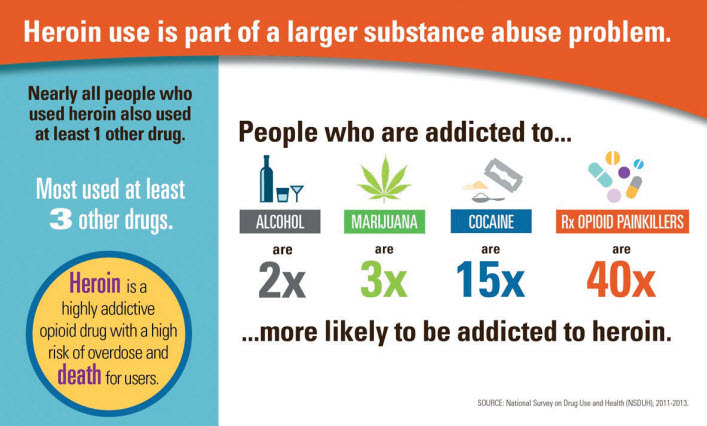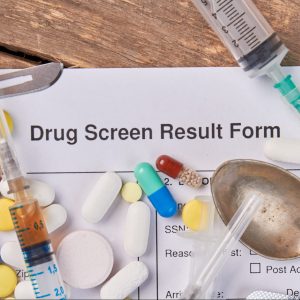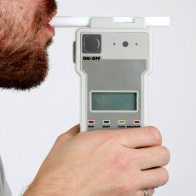
No longer just a public safety issue, prescription drug misuse and abuse also weighs heavily on the workplace. According to The Clinical Journal of Pain, illegal use of prescription opioids cost the United States employers over $40 billion dollars in lost productivity in 2006 alone. Five drugs in particular, OxyContin®, oxycodone, hydrocodone, propoxyphene, and methadone, accounted for two-thirds of the total economic burden. As regulations tighten around these drugs and availability becomes more scarce, users are turning to other, more potent opioids such as fentanyl or street drugs like heroin.
One of the nation’s leading safety advocates, the National Safety Council (NSC), highlights issues in an effort to eliminate preventable deaths at work, in homes and communities, and on the road through leadership, research, education and advocacy. The NSC has highlighted prescription drug misuse as one of the critical safety issues facing our communities because of the alarming rise in addiction rates, ER visits, overdoses, and fatalities. With over 43,000 drug overdose fatalities per year in the United States, it is safe to say that we have reached epidemic levels.
Prescription Drug Addicts 40 Times More Likely To Become Addicted To Heroin

The NSC reported results from its recent survey, examining employers’ perceptions and experiences with prescription drugs. Because of misuse and abuse, employers face challenges with absenteeism, lower job performance, accidents and injuries, positive drug test results, co-workers using, borrowing, or selling prescription drugs at work, and a negative impact on employee morale. In addition, the NSC survey data shows:
- 81 percent of companies lack a drug-free workplace policy
- 76 percent of companies do not provide training to identify drug use/abuse
- 41 percent of companies do not drug test for synthetic opioids such as fentanyl
Employers want to help employees, but less than 20 percent of employers responded that they were “extremely prepared” to deal with the misuse or abuse of prescription medications. Managers stated that they would like additional clarification regarding policy, benefits, insurance, treatment options, and simply identifying warning signs of potential issues.
 How can the remaining 80 percent of employers get informed and gain confidence when facing this challenge? Experts suggest that companies add specialized workplace training for supervisors, implement drug testing programs, and strengthen their policies with more precise language about drug use without a prescription, employee impairment, and return-to-work protocols.
How can the remaining 80 percent of employers get informed and gain confidence when facing this challenge? Experts suggest that companies add specialized workplace training for supervisors, implement drug testing programs, and strengthen their policies with more precise language about drug use without a prescription, employee impairment, and return-to-work protocols.
The NSC has amassed a comprehensive collection of resources such as drug fact sheets, strategy guides, videos, graphics, and survivor stories to bring greater awareness to the issue.
Download the kit for employers.




 The MRO Review Process
The MRO Review Process 
 Alcohol abusers number over 14 million in the United States alone and many of them are gainfully employed in our workplaces. Alcohol is responsible for a large number of workplace accidents and injuries. In addition, alcohol abuse in the workplace leads to billions of dollars in lost revenues for businesses due to absences, lower productivity, employee turnover, rising health costs and more.
Alcohol abusers number over 14 million in the United States alone and many of them are gainfully employed in our workplaces. Alcohol is responsible for a large number of workplace accidents and injuries. In addition, alcohol abuse in the workplace leads to billions of dollars in lost revenues for businesses due to absences, lower productivity, employee turnover, rising health costs and more. education, supervisor training and testing. Providing educational opportunities for employees on the effects of alcohol use and abuse in the workplace is the first step. Part of that education must include making employees aware of the resources available to them if they do have a problem. Employers should have literature and materials available to all employees about local resources or the company’s Employee Assistance Program (EAP). Supervisors must be trained in identifying and observing signs of substance use on the job. They must be trained on how to confront the situation properly and how to get the employee tested if need be. The company’s substance free workplace program must include the ability to test employees for alcohol use in situations like reasonable suspicion, post-accident or random testing.
education, supervisor training and testing. Providing educational opportunities for employees on the effects of alcohol use and abuse in the workplace is the first step. Part of that education must include making employees aware of the resources available to them if they do have a problem. Employers should have literature and materials available to all employees about local resources or the company’s Employee Assistance Program (EAP). Supervisors must be trained in identifying and observing signs of substance use on the job. They must be trained on how to confront the situation properly and how to get the employee tested if need be. The company’s substance free workplace program must include the ability to test employees for alcohol use in situations like reasonable suspicion, post-accident or random testing.
 Scientific experts at Quest Diagnostics have analyzed and published annual workplace drug testing data and insights since 1988 in the
Scientific experts at Quest Diagnostics have analyzed and published annual workplace drug testing data and insights since 1988 in the  Grandparentage Tests
Grandparentage Tests
 Now what? I sit here staring at the plus sign on the at-home pregnancy test. It’s the same result I got with the three other tests I did (just in case). A range of emotions are flooding my mind as I wrap my head around the reality that there is a baby growing inside me. I haven’t felt quite right for the past few weeks and this explains a whole lot. The father! I need to tell him about this too. When this sinks into my consciousness I feel what could possibly be my first wave of morning sickness rising to greet me. It’s not morning sickness though. It is pure emotional fear and confusion. There is a very real possibility the father could be one of two different men.
Now what? I sit here staring at the plus sign on the at-home pregnancy test. It’s the same result I got with the three other tests I did (just in case). A range of emotions are flooding my mind as I wrap my head around the reality that there is a baby growing inside me. I haven’t felt quite right for the past few weeks and this explains a whole lot. The father! I need to tell him about this too. When this sinks into my consciousness I feel what could possibly be my first wave of morning sickness rising to greet me. It’s not morning sickness though. It is pure emotional fear and confusion. There is a very real possibility the father could be one of two different men.
 DNA paternity testing is an important genetic test that determines the biological father of a child. DNA is received from our biological parents — half from our mother and half from our father. A DNA paternity test compares the child’s DNA patterns with that of the alleged father to determine if there is a genetic match confirming or denying paternity.
DNA paternity testing is an important genetic test that determines the biological father of a child. DNA is received from our biological parents — half from our mother and half from our father. A DNA paternity test compares the child’s DNA patterns with that of the alleged father to determine if there is a genetic match confirming or denying paternity.

